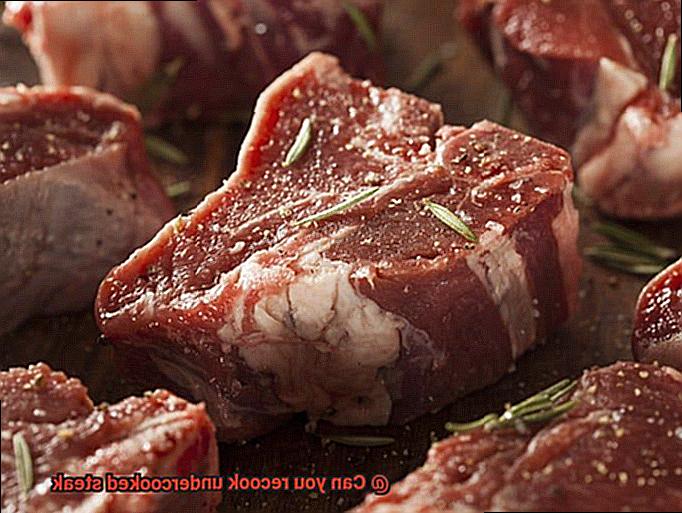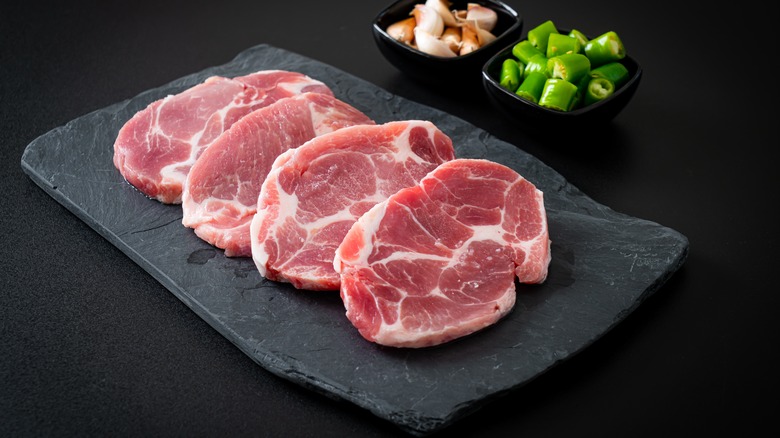Anyone who has cooked meat knows what it’s like to take it out of the oven or pan and find that it’s not quite done. When it comes to steak, it probably won’t hurt you (that’s why you can eat it rare), and in America, we tend to greatly exaggerate how dangerous pork that isn’t fully cooked is. But if its chicken? Hoo boy. You definitely want to finish that bad boy off, because undercooked chicken is a serious health risk. It’s not healthy, but if you can’t get the meat to the right temperature, you need to cook it longer.
Fortunately, its an easy fix when this happens. You just put it back in the oven the same way it was, right? If you have time, yes; that can be a great way to do it. What if you don’t have time to cook the meat? There are other quick ways to get it where you need it to be! The easiest way is to cut it into smaller pieces first.
Undercooking beef can happen to even the most seasoned home cooks. You eagerly pull that beautiful roast or steak out of the oven ready to slice into the juicy tender meat, only to discover it’s still tough, chewy, and raw in the center.
Don’t panic! With the right techniques, you can often salvage and recook undercooked beef to perfection. The tricks depend on just how underdone the meat is and what cut you’re working with. Follow these tips to rescue dinner and enjoy mouthwatering beef despite the initial hiccup.
Evaluating the Extent of Undercooking
First, closely examine the beef to determine how undercooked it really is. This will guide you in choosing the best approach. There are a few common scenarios:
-
The outside is seared while the inside remains completely raw and cool. This means the beef simply needs more oven time to finish cooking through.
-
The interior is partially cooked but still red, bloody, and cold. Sous-vide style “medium rare” beef may look like this straight from the bath. It requires less additional cooking than completely raw beef.
-
The inside is pink but hot, meaning it reached the target temperature but needs a little longer to tenderize.
-
Only part of the meat is underdone like just one end of a roast. You may be able to salvage the properly cooked portions.
Fixing Beef Undercooked on the Inside
For beef seared on the outside but raw on the inside, the fix is simple Pop it back into the oven until cooked through. Use an instant-read thermometer to check for doneness; target 145°F for medium-rare steak and roasts and 160°F for ground beef.
To prevent the outside from overcooking or drying out, employ one of these handy methods:
-
Wrap the undercooked beef loosely in foil and return to the oven. The foil traps steam to gently finish cooking without crisping the exterior further.
-
Place the beef in a baking dish, add a little beef or chicken stock or wine to the bottom, then cover tightly with foil. The steam from the hot liquid will evenly cook the meat.
-
If the meat was seared in a cast-iron skillet, you can return it to the same hot pan, add a splash of liquid, then cover and cook over low heat on the stovetop. The residual heat gently finishes the cooking.
For large cuts like roasts or brisket with just the center underdone, carve off the properly cooked outer portions to enjoy as-is. Then return the undercooked middle to the oven using one of the moist-heat methods above.
Re-Searing and Cooking Undercooked Interior
If the inside of the beef is undercooked but warm and partially cooked, with some redness and bloodiness, it likely just needs a little more oven time to finish tenderizing.
To prevent the outside from overcooking before the inside is done, start by giving it a quick re-searing. Heat a cast-iron skillet over high heat, add a little oil, and quickly brown all sides of the beef again. This firms up and crisps the exterior.
Then, transfer the beef to a 300°F oven uncovered until it reaches 5-10 degrees below the target temperature for doneness. The cooler oven prevents the crusty exterior from burning while allowing plenty of time for the proteins to break down and tenderize.
Finally, remove from the oven and tent loosely with foil for 5-10 minutes to let the interior finish cooking via carryover cooking. The meat should now be perfectly done throughout.
Dealing with Partially Undercooked Large Cuts
For large cuts like prime rib or brisket, sometimes just one portion of the meat turns out undercooked. Here are some ideas to still enjoy the properly cooked areas:
-
Slice off the properly cooked sections and keep them warm while returning the underdone portion to the oven using the methods above.
-
Repurpose the undercooked ends into dishes like fajitas, tacos, or chili where you can slice or shred the meat after further cooking.
-
Consider serving the perfectly cooked slices as-is, then using the underdone ends for sandwiches, quesadillas, or rice bowls later in the week after properly cooking them through.
Preventing Undercooked Beef Next Time
To avoid having to recook beef in the future, keep these handy tips in mind:
-
Always let roasts, beef tenderloin, steaks, etc. rest at room temperature for 30-60 minutes before cooking. Cold beef from the fridge takes longer to cook through.
-
Be sure to temper very thick cuts by starting them at a lower oven temp (e.g. 250°F) for the first portion of cooking.
-
Invest in a good digital instant-read thermometer. Test the internal temperature early and often.
-
For food safety with large cuts, target temperature over minimum cook times. A big roast may take over an hour to come up to temp.
-
When in doubt, remember you can always cook the meat a little longer, but you can’t undo overcooking. Check for doneness a touch before the target temp.
With the right methods and some practice, you can master perfectly cooked beef even when surprises like undercooking happen. Just stay calm, evaluate the situation, and apply the proper fix. Your dinner guests will be none the wiser!
The key is to gently bring undercooked beef up to temperature without overdoing the outside. With smart use of moist cooking methods, temperature monitoring, and creative repurposing, you can still achieve tender, juicy results. Follow these guidelines to salvage undercooked meat and enjoy your meal.

Cutting meat into smaller pieces cuts down on cooking time

Slicing meat into smaller pieces makes sense as a method for fast cooking. Smaller pieces mean more of the proteins surface area can be exposed to heat, and itll cook faster. This is the best way to handle poultry or pork (though not steak). For chicken, you want the internal temperature to be 165 degrees Fahrenheit and for pork, it should be 135 degrees Fahrenheit. Make sure you leave the pieces in for long enough to reach those temperatures.
You should also keep the moisture in those smaller pieces, though, since they’ll dry out faster because they’ll be exposed to heat more. Because of this, you should put stock, sauce, or water on top of the meat before putting it in the 400-degree oven. The key is to cook it quickly but not to sacrifice dinner in the process.
How to fix tough meat in a curry or stew
FAQ
How do you fix undercooked beef?
Can you Recook meat that wasn’t fully cooked?
How do you Recook undercooked meat?
Is it OK to Recook beef?
